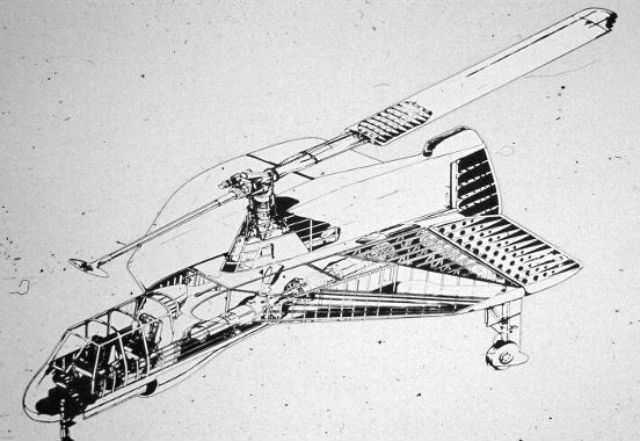By the end of WWII, the basics of helicopter technology as we know it had generally been worked out — and we’d begun to reach the aircraft’s physical limitations. For the US Air Force, the solution to the issue running up against these performance walls was simple: combine the best parts of a helicopter and jet together, creating the chimeric delta-wing Convertiplane.
Developed between 1951 and 1953 by a joint research team from the US Air Force and Army, working with NASA and Sikorsky Aircraft, the XV-2 (model number S-57) was built to exceed the speed limitations of helicopters without giving up its vertical takeoff and landing capabilities. To do this, the XV-2 would have to employ a “stowed rotor”, which would stop, fold, and retract into the fuselage of the delta-wing aircraft as it hit cruising speed. But getting a traditional multi-blade rotor to stop and fold itself into the fuselage proved quite impossible.

After numerous failed iterations the development team struck upon a radical, yet surprisingly feasible, idea: instead of using a bunch of smaller blades that would have to be gathered up before being stowed, use a single, massive aluminium counter-weighted blade. This humongous 15m long rotor measured twice the aircraft’s 7m wingspan, which was necessary to minimise disc load (gross weight/rotor disc area). As such, the disc load on the XV-2 measured less than 14kg/sqm, less than a third of the 50kg/sqm modern helicopters generate.
The XV-2 drew its power from a 1050 HP Wright GT-43 Typhoon Turboprop as well as a small tip jet that helped accelerate the huge blade, while a single jet engine engaged during high-speed flight. As “Prof” Sikorsky, Igor’s Sikorsky’s cousin, explained in an unpublished memoir of the Sikorsky company,
To prevent excessive blade flapping at low rotor speeds, the design provided for the flapping hinge to be locked below 25% of the design rotor speed. In this regime, lift forces on the blade are transmitted directly to the aircraft as moments which could produce pitching and rolling motion of the aircraft. During a normal autorotation stop, the blade drag at zero blade lift provides the torque necessary to stop the rotor. A normal start would be made by using power to start the rotor at zero blade lift. Hence, for normal starts and stops, the blades would contribute essentially no rolling and pitching disturbances even though locked.
This promised a top speed of between 300 to 400 knots, nearly double what the helicopters of the day could muster. However, the initial prototype could only reach 165 knots and had an endurance of just over two hours. This sub-par performance was enough to doom the project, which was cancelled in 1954. Our loss. [Wikipedia – Sikorsky]
